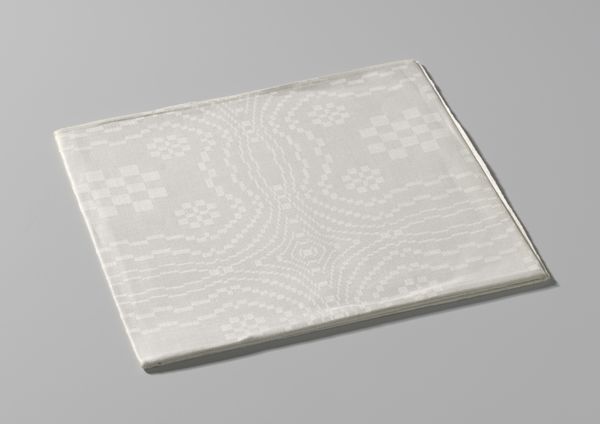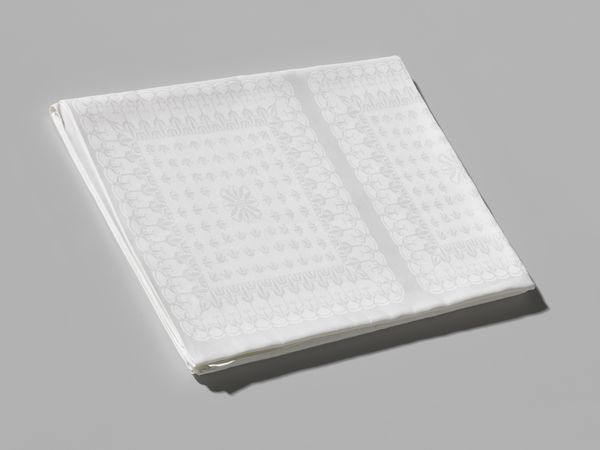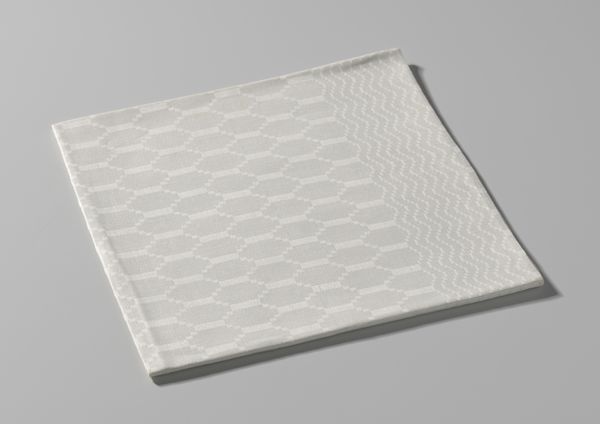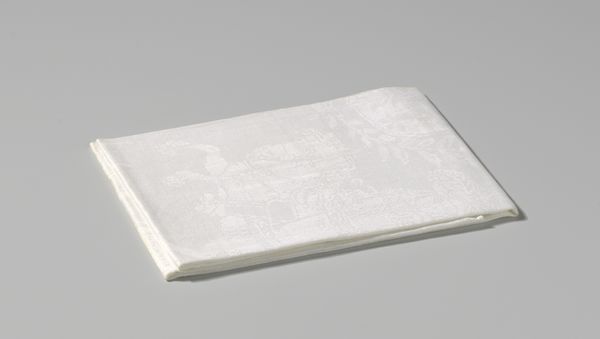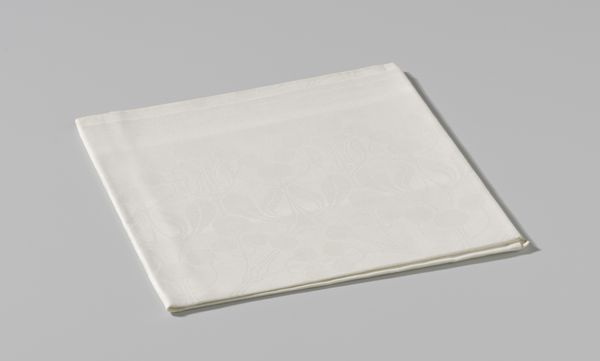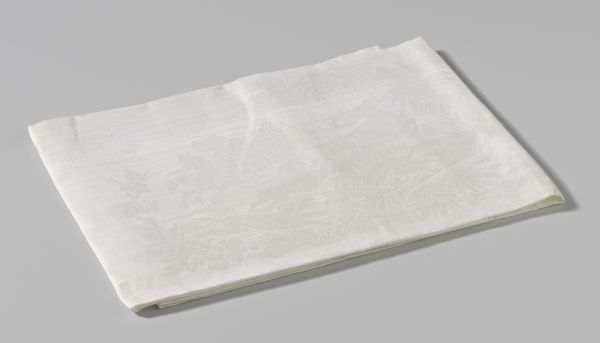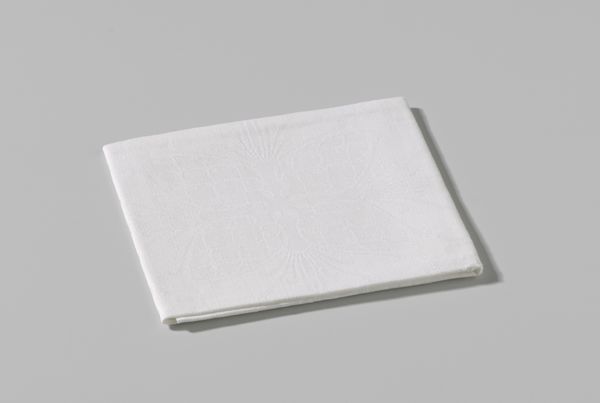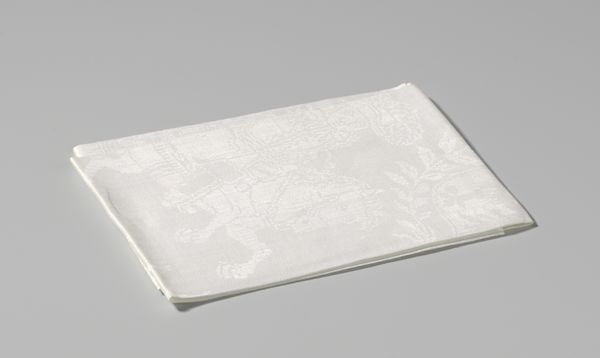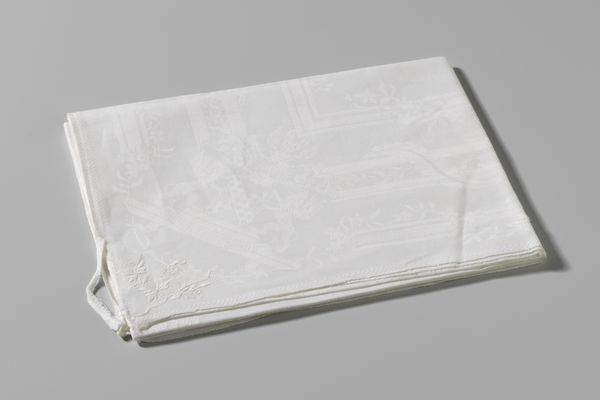
mixed-media, weaving, textile
#
mixed-media
#
weaving
#
textile
#
decorative-art
Dimensions: height 78.0 cm, width 80.0 cm
Copyright: Rijks Museum: Open Domain
Curator: This textile piece, created sometime between 1888 and 1894 by Ch. Stoop & Cie, is titled "Servet van linnen met pellenpatroon." The mixed-media work, weaving together elements of design, evokes a curious feeling. Editor: It’s a rather stark piece, wouldn't you say? Its austere palette, the regimented grid… It speaks to a time of rigid social structures, perhaps even oppressive expectations placed on domestic life. Curator: Yes, but let's consider the symbolism of the weave itself. Throughout many cultures, weaving represents connection, interdependence. Threads intertwined to create something strong, something useful. Editor: Interdependence yes, but who benefits? Is the labor of creating textiles properly valued in this period? We need to acknowledge that in late 19th century Europe, these domestic crafts were intrinsically tied to gender and class. This pattern may symbolize more than a cozy domestic space. It may point to systems that confine and define women through unpaid labor. Curator: That’s certainly a valid interpretation when examining its production, and there are different meanings that we can derive when assessing it more formally. The geometric pattern, while appearing rigid to us now, was rather novel during the era of decorative art. Patterns like this broke from past romanticized natural forms, embodying modernizing society in many aspects of design. Editor: The use of pattern is where things get interesting because its geometric qualities present as either an embrace or an attempt to wrestle order from industrial chaos. It may also reference early forms of computing—textiles are directly tied to the history of coding and computing and could also be an exploration of humanity’s efforts to control nature. The neutrality and cleanliness could signal new attitudes toward hygiene in industrialized areas. Curator: Precisely! Consider also the role of linen as a symbol of purity and cleanliness, imbued with a certain status. This “Servet van linnen met pellenpatroon” would be more than just a simple item. Editor: And so, an object seemingly simple contains multitudes—historical, cultural, societal anxieties woven into the very fabric of its existence. It reminds us of the complicated intersections of everyday life and our assumptions of value. Curator: Indeed, allowing us to examine the emotional, psychological, and visual ties connecting culture, labor, and modern progress during a transitional era.
Comments
No comments
Be the first to comment and join the conversation on the ultimate creative platform.
